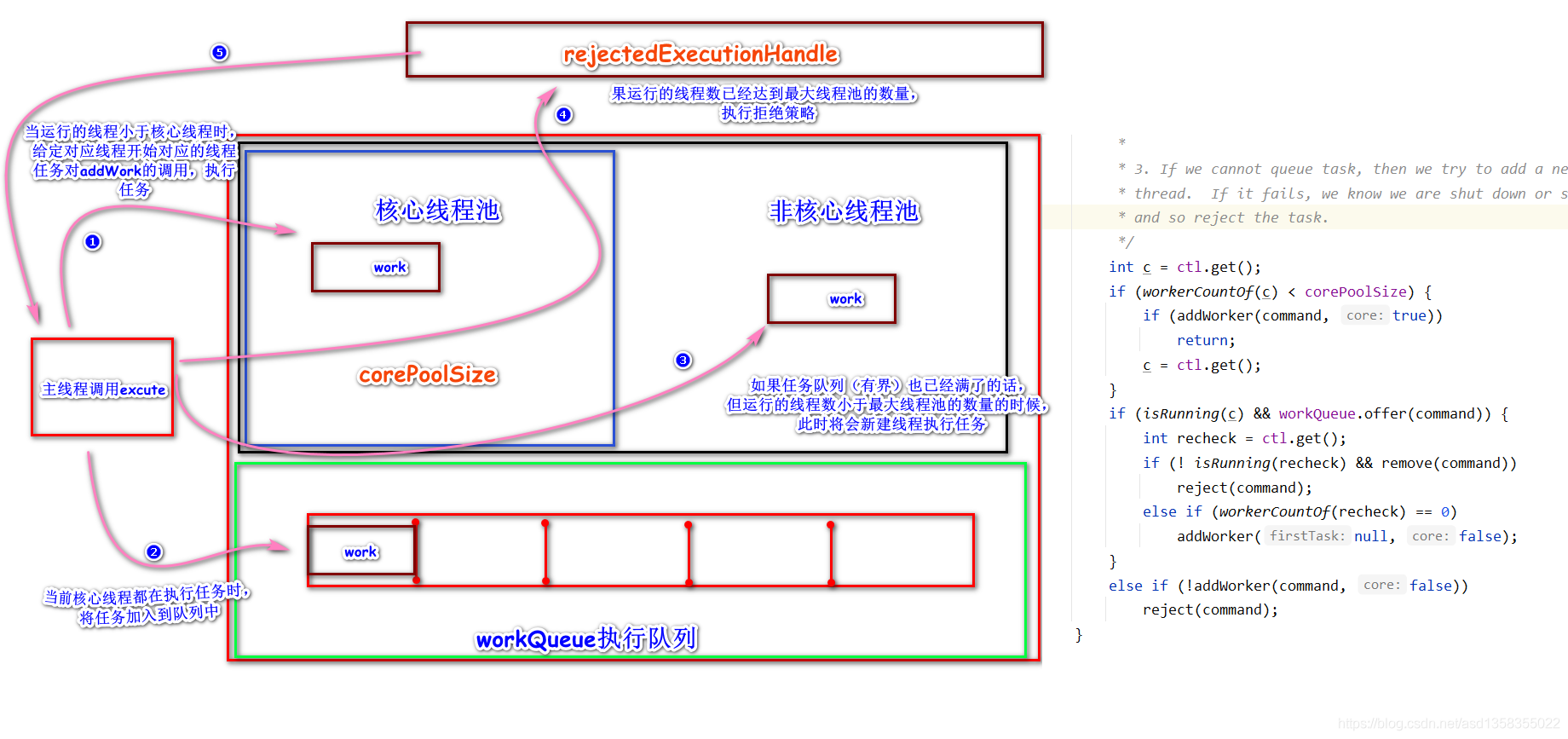public static ExecutorService newSingleThreadExecutor() {
return new FinalizableDelegatedExecutorService
(new ThreadPoolExecutor(1, 1,
0L, TimeUnit.MILLISECONDS,
new LinkedBlockingQueue<Runnable>()));
}
适应场景:适用于需要保证任务顺序执行,并且在任意时间点不会有多个线程活动的场景。
**2、Executors.newFixedThreadPool(int n):**创建固定线程数量的线程池,该线程池中的线程数量保
持不变。当有新任务提交时,线程池中若有空闲线程,则立即执行;若没有,则新的任务会被暂
存在一个任务队列中,待有线程空闲时,便处理任务队列中的任务。
适应场景:适用于为了满足资源管理需求,而需要限制当前线程的数量的应用场景,它适用于负 载比较重的服务器。
代码实现部分
public static ExecutorService newFixedThreadPool(int nThreads) {
return new ThreadPoolExecutor(nThreads, nThreads,
0L, TimeUnit.MILLISECONDS,
new LinkedBlockingQueue<Runnable>());
}
**3、Executors.newCachedThreadPool():**创建一个可以根据实际情况调整线程数量的线程池,线程池中
的线程数量不确定。若有空闲的线程可以复用,则会优先使用可复用的线程;若所有线程都在工
作,又有新的任务提交,则会创建新的线程处理任务,没有个数上限。
适应场景:大小无界的线程池,适用于执行很多的短期任务的小程序,或者负载较轻的服务器。
代码实现部分
public static ExecutorService newCachedThreadPool() {
return new ThreadPoolExecutor(0, Integer.MAX_VALUE,
60L, TimeUnit.SECONDS,
new SynchronousQueue<Runnable>());
}
**4、Executors.newScheduledThreadPool(int n):**创建一个定长线程池,支持定时及周期性任务执行
代码实现部分
public ScheduledThreadPoolExecutor(int corePoolSize) {
super(corePoolSize, Integer.MAX_VALUE, 0, NANOSECONDS,
new DelayedWorkQueue());
}
5、自定义线程池:
new ThreadPoolExecutor(10, 20, 100L, TimeUnit.SECONDS, (BlockingQueue<Runnable>) new WorkQueueImpl());
14、不建议使用Executors创建线程池的原因
从上面列举中我们可以看出来前四种创建线程的方式是由jdk中提供的工具包封装好的工具类创建的,阿里并不推荐大家直接去使用这个Executors去创建使用线程池,原因如下:
1、ScheduledThreadPool和CachedThreadPool的maximumPoolSize参数(允许最大线程数)为Integer.MAX_VALUE,会有OOM的风险
2、SingleThreadExecutor和FixedThreadPool的workQueue参数(工作队列)容量为Integer.MAX_VALUE,会有OOM的风险
建议使用自定义线程池。(结合业务场景去设置自定义线程池的参数)
15、线程池原理图:(部分)
这是我画的略微粗糙的图,凑乎看哈哈
线程池执行execute,提交任务时的场景:对比右边执行execute方法代码理解图示

工作较忙,持续更新中。。。。。。
cs


